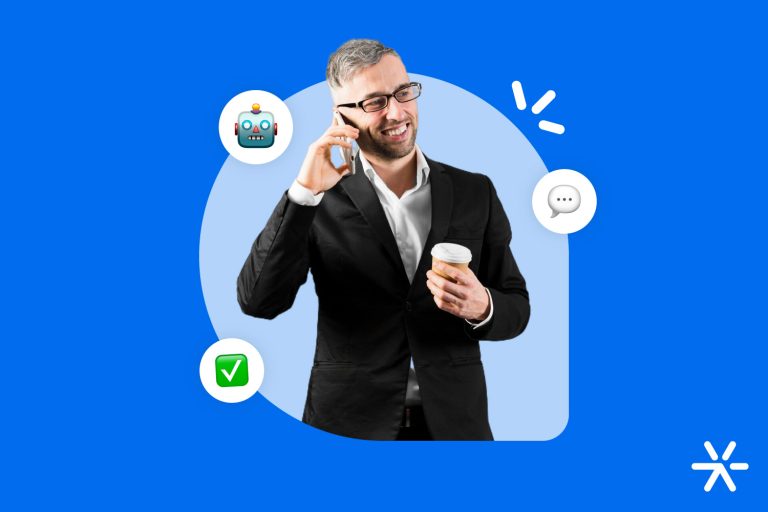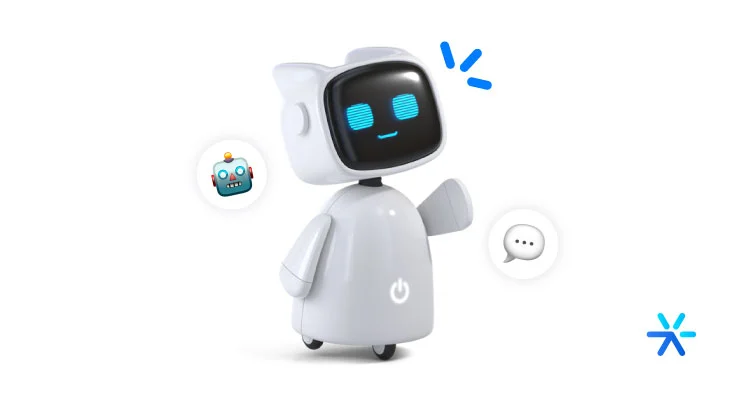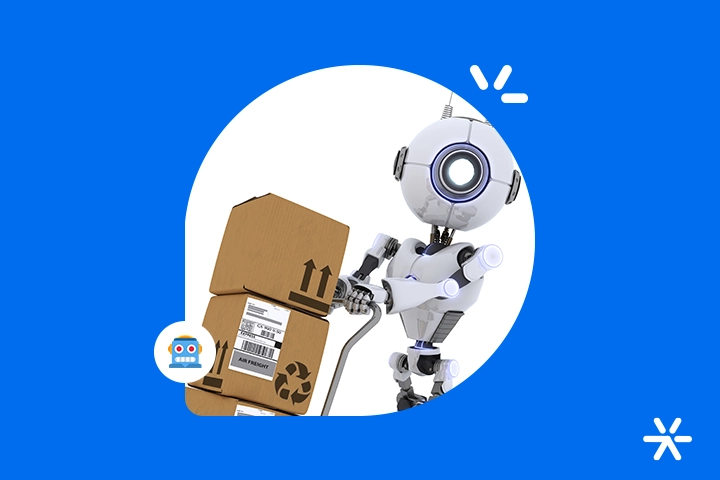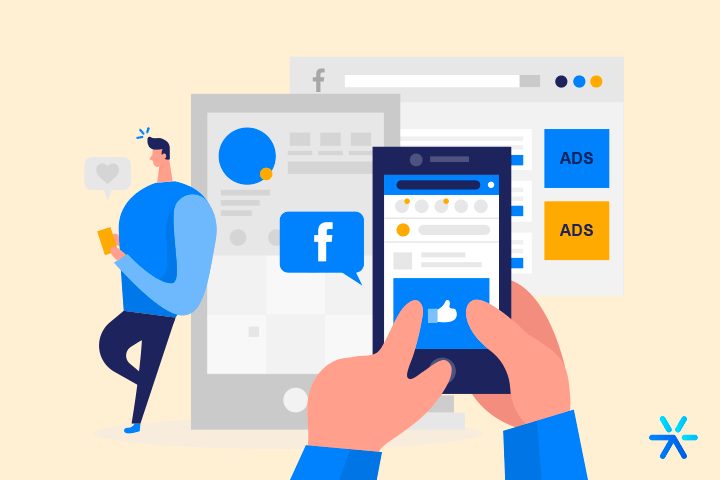Client Acquisition with Artificial Intelligence – Step by Step
Client acquisition in digital marketing is one of the broadest and even most enjoyable tasks in the entire process.
Primarily situated at the Top of the Funnel, this phase rewards creativity and content production while having a broad reach.
However, client acquisition is not limited to this stage of the funnel. Capturing clients involves guiding them through the Customer Journey.
This is precisely where Artificial Intelligence for client acquisition plays a significant role.
From the most creative methods to the more procedural and operational ones, AI facilitates client acquisition, serving as a crucial support for marketing teams operating at the Top of the Funnel—and beyond.
Today, we’ll delve deeper into this topic, starting with an exploration of AI’s role throughout the Sales Funnel—where can it be used, and how exactly?
Ready to dive in? Let’s start!
The State of AI in Client Acquisition in 2025

Before everything else, we need to understand the advancements of AI in 2025—what it can achieve and what remains to come.
2025 is the year of multimodal AIs and AI builders—tools for creating systems with Artificial Intelligence.
Additionally, unimaginable integrations are becoming a reality.
However, it’s important to clarify that AIs are still evolving. 2024 witnessed the creation of numerous distinct systems, while 2025 is shaping up to be the year of integration among these systems.
Many marketing platforms already offer AI systems that, if not currently delivering everything mentioned in this article, are well on their way to doing so.
Thus, let’s discuss the promises of AI alongside the functionalities it already provides, making clear distinctions where necessary.
In the next section, we’ll explore how AI fits into the Marketing and Sales Funnel—a somewhat abstract space.
Afterward, we’ll dive into specific AI systems already in operation, showcasing their functionalities.
AI-Powered Client Acquisition Throughout the Marketing Funnel

First, let’s discuss where exactly Artificial Intelligence assists in client acquisition across the Sales Funnel.
As mentioned earlier, client acquisition is often attributed to the Top of the Funnel, but that’s not entirely accurate.
The ToFu stage focuses on lead generation, which is quite different from acquiring clients.
In reality, client acquisition happens at all three stages of the Marketing and Sales Funnel, with varying focuses and approaches at each step.
Here’s a simplified breakdown of client acquisition across the funnel:
- Top of the Funnel: Lead generation and initial lead qualification.
- Middle of the Funnel: Lead qualification and nurturing.
- Bottom of the Funnel: Active approaches to convert leads into clients and relationship marketing to encourage repeat purchases or maintain contracts in the case of services.
For deeper insights, check out our specific articles on each funnel stage:
➡️ Top of Funnel: Strategies and Content for This Sales Stage
➡️ Middle of Funnel: What It Is and How to Create This Type of Content
➡️ Bottom of Funnel: How to Create Content for This Stage
Now, let’s understand how AI supports client acquisition at each of these stages.
AI in the Top of the Funnel for Lead Generation
At the Top of the Funnel, AI primarily focuses on generating new leads. Lead generation involves several key aspects:
- Creating content to attract visitors.
- Building brand awareness.
- Developing in-depth content for practical lead generation.
- Crafting effective CTAs.
- Identifying the best placement for CTAs.
- Designing ads aimed at lead conversion (not necessarily sales).
AI has numerous applications across these activities.
The most popular use today is leveraging Generative AI tools for content creation.
From brainstorming ideas to drafting initial outlines, Generative AI tools play a significant role, albeit with limitations.
Beyond content creation, AI enhances lead conversion through chatbots that offer personalized in-depth offers and assist in crafting effective calls-to-action.
Leadster, for example, has been providing this support since 2022.
Now, with the introduction of Google’s Gemini, marketers can even rely on an integrated chatbot in Google Ads, simplifying ad creation for those new to the platform.
AI in the Middle of the Funnel
The Middle of the Funnel is primarily about creating nurturing flows to qualify leads and guide them toward the Bottom of the Funnel.
Nurturing flows are highly specific and depend on each brand’s conversion structure.
AI helps significantly in areas like analytics, designing nurturing flows, and creating materials for lead engagement throughout the process.
AI today addresses this aspect particularly in the area of analytics, in building workflows, and in creating materials to be sent to leads throughout the process.
Integration with sales CRMs and marketing platforms (still in its early stages) will enable the creation of personalized workflows based on your target audience’s profile and their interactions with the brand.
This enhances the accuracy of Lead Scoring and allows the delivery of MQLs with far greater assurance to the sales team.
Just like we manually do today. Of course, AI won’t be able to create a complete and perfect nurturing workflow—but that’s not even its goal.
Even within the nurturing process itself, AI helps craft the best messages, SMS, emails, and even call scripts for your leads.

AI in the Bottom of the Funnel
The Bottom of the Marketing Funnel marks the beginning of the Sales Funnel.
At this stage, all efforts are focused on generating SQLs—Sales Qualified Leads.
AI applied to marketing automation systems—which is already being implemented gradually and will expand throughout 2025—is capable of understanding the nuances of qualification and Lead Scoring.
A bit more about Lead Scoring: it assigns scores to each interaction a lead has with your brand.
However, with a large lead base and a small team, understanding the complete story behind this qualification can be challenging.
Two leads may have the same score but might have downloaded completely different materials.
It’s possible to differentiate categories—for example, one lead qualified by downloading materials about digital marketing from your agency, while another has the same score but only downloaded materials about e-commerce.
This can be identified in marketing automation systems, right?
Now consider the lead who only downloaded e-commerce materials. Within this segment, there might be different categories of materials in your company.
An AI can read these data points, understand these subtle differences between the two leads, and create much more personalized approaches.
This already happens today, even without AI. In fact, it has been happening for years—but mainly in larger companies.
HubSpot, for example, is known for calling its leads and specifically mentioning the materials they’ve downloaded.
But what about companies without a sales department as large as HubSpot’s, who need to send mass emails?
In this case, AI enables the democratization of advanced strategies at the Bottom of the Funnel.
AI Systems for Client Acquisition Available Today
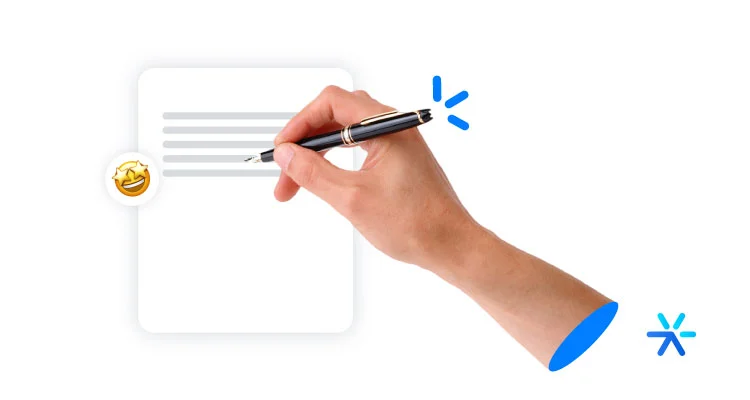
There are already several AI systems today capable of delivering results seamlessly across all three stages of the Funnel.
And in various ways as well. From generating raw content with ChatGPT to integrating your data into creating nurturing flows, AI has been a part of lead generation in one way or another for some time now.
What we will see in 2025 is an expansion of this integration and the addition of multimodal capabilities to these AIs.
Most major marketing-focused systems already have some type of AI functionality.
AI is already present in ad creation, analytics systems, audience discovery and creation, content generation, and much more.
To fully understand how client acquisition can leverage AI, we need to explore these systems further and see in practice what they are already capable of.
And that’s exactly what we bring now in the list below. Ready? Let’s dive in:
SemRush (ToFu)
Starting with the most basic AI of all, but also one of the oldest: the one embedded in SemRush.
SemRush initially emerged with a simple proposal: just as you can analyze your website’s metrics through Google Analytics, it allows you to view metrics from other websites, especially competitors.
However, there’s an important caveat to consider.
SemRush’s approach has never been entirely accurate. The same operational AI system also analyzes keyword traffic and difficulty levels, but it’s all an extrapolation.
The data is not precise, and it’s challenging to determine when it’s accurate or not, as there’s no definitive reference.
What SemRush’s AI does well is providing terms and keywords related to a specific brand and analyzing indexed keywords on Google.
More strategic uses may offer predictions, but these should not be taken as fact.
For this reason, SemRush’s AI for lead generation should be confined to the Top of the Funnel and even then, it serves as a hypothesis to be validated through subsequent efforts.
Everything SemRush’s AI delivers today:
- Keyword analysis;
- Competitor analysis;
- Technical SEO;
- Backlink management;
- PPC campaign automation;
- Content planning and creation (especially SEO analysis);
- Market trend forecasting;
- Social media presence management;
- Personalized insights for specific sectors;
- Automated integrations and reports.
Sales Navigator (ToFu)
In the case of Sales Navigator, calling it an AI system is somewhat generous.
It is, at best, an algorithmic AI, similar to those employed by Meta platforms.
The analysis of data from everything posted on the platform allows for a deeper understanding of the target audience you aim to reach.
Lead generation, especially in the B2B sector, greatly benefits from Sales Navigator. While it doesn’t provide a “true” AI, it is still an excellent system for identifying promising business opportunities.
In fact, it outperforms many “true” AIs in this regard and is considered indispensable for B2B client acquisition efforts.
LinkedIn has access to vast amounts of data on profiles, connections, and interactions.
Sales Navigator processes this information to identify patterns that assist in prospecting, such as job titles, industries, and interests.
Account-Based Marketing strategies perform even better in this context.
Zia by Zoho (ToFu, MoFu, BoFu)
Zoho is a popular sales CRM that recently introduced an AI system called ZIA — Zoho Integrated Assistant.
Like most AI systems launched between 2023 and 2024, Zia is a contextual virtual assistant with operational functionalities and a significant dose of generative AI.
Here are its functions:
- Predictive analysis: Zia predicts which leads are most likely to convert, helping prioritize follow-ups.
- Sentiment analysis: It evaluates customer interactions, such as emails and calls, to determine sentiment and suggest the most effective approach.
- Sales automation: Zia automates processes like email sending, task creation, and scheduling appointments.
- Intelligent reporting: It provides insights into the sales team’s performance and suggests improvements.
- Multi-channel integration: Zia interacts with channels like email, chat, and social media, enabling multi-channel lead acquisition.
Zia is a great example of how AIs support client acquisition when integrated into CRMs and marketing automation systems.
There are several other AIs from similar systems offering nearly the same features.
We can mention HubSpot’s AI, for instance. Its functionality is almost identical, with only slight differences.
Or Salesforce Einstein, integrated into the Salesforce CRM.
Given this, it’s not worth analyzing each of these tools individually, right? Let’s move on to others offering more advanced features.
PandaDoc (BoFu)
When closing a deal, there are needs related to documentation, such as signing contracts, sending proofs, etc.
PandaDoc is an excellent conclusion to this article as it specifically addresses these final points.
It is a platform for managing documentation, enabling the creation, organization, and signing of various documents by all involved parties.
Recently, it launched a feature using GPT-3.5, still in its testing phase, that allows the creation of varied blocks for documents using generative AI.
This is an often-overlooked aspect in most digital marketing and sales strategies. But companies with longer sales and contracting processes must address such matters, and AI support makes this much easier.
Leadster.AI (ToFu, MoFu, and BoFu)
Leadster.AI is our generative AI chatbot capable of delivering contextual and natural language results.
The system is installed on your website and can read your page content, directly answering any questions from your customers or leads.
This is particularly interesting for e-commerce, where it not only provides instant and personalized customer support but also generates product descriptions based on specifications.
Take a guided test today by clicking the banner below.
Thank you for reading!



